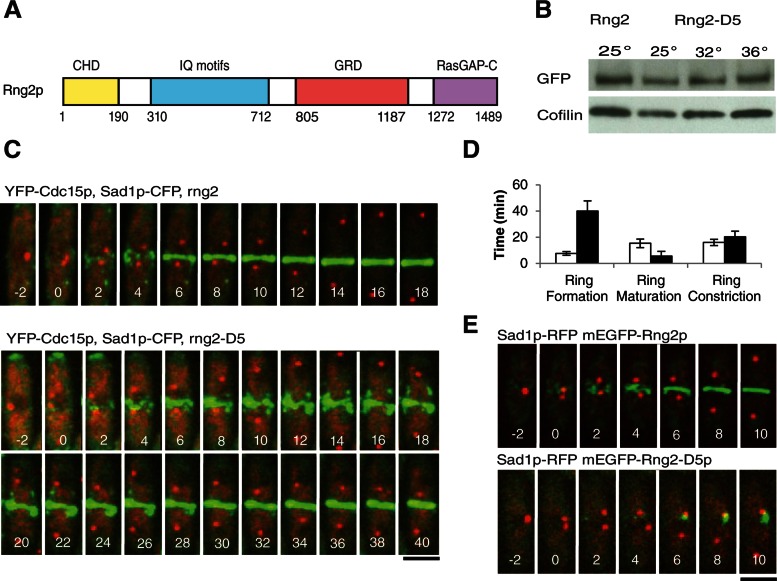FIGURE 1:
Rng2-D5 cells assemble contractile rings more slowly at a semipermissive temperature than do wild-type cells. (A) Schematic of Rng2p domains. (B) Western blots with antibodies to GFP or cofilin of lysates of cells expressing mEGFP-Rng2p or mEGFP-Rng2-D5 at the permissive (25°C), semipermissive (32°C), or restrictive (36°C) temperature. (C) Time series of fluorescence micrographs at 2-min intervals at 32°C of wild-type (top row) and rng2-D5 (bottom row) cells expressing Sad1-CFP (red) to mark spindle pole bodies and YFP-Cdc15p (green) to mark nodes and contractile rings. Time in minutes is shown in white, with spindle pole body separation defined as time zero. (D) Average times (±1 SD) required for wild-type (open bars) and rng2-D5 (filled bars) cells to assemble (n = 27 and 9, respectively), mature (n = 25 and 21, respectively), and constrict (n = 21 and 19, respectively) contractile rings using YFP-Cdc15p as the marker for contractile rings. (E) Time series of fluorescence micrographs at 2-min intervals at 32°C of cells expressing Sad1-RFP (red) and (top) either mEGFP-Rng2p or (bottom) mEGFP-Rng2-D5 (green). Scale bars, 5 μm.

